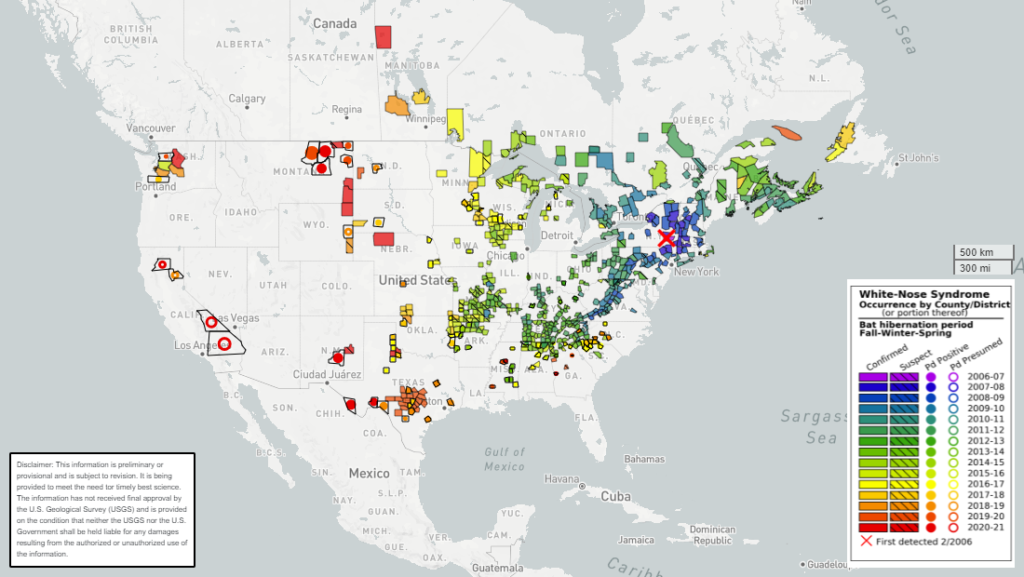
by Aura Stauffer, Wildlife Biologist with the Department of Conservation and Natural Resources
Can you please help me? I have bats in the siding of our cabin and they are pooping all over the place! Who gets a phone call like this as a routine part of their job? The answer is DCNR state park and state forest staff! I can understand the cabin owner’s aggravation, but I am happy to hear that there are still some bats around. Back in 2006 I attended a conference for the bat biologists from the northeast at East Stroudsburg University. One of the biologists from New York showed us a picture of bats in a cave that had a white substance on their faces. He nonchalantly asked, “have any other state biologist seen this?” What we didn’t know then was this was just the beginning of a fungal disease called white-nose syndrome (WNS) that has decimated many North American bat species.
Why should people care? They should care because bats provide a free insect control service. It is estimated that bats provide $3.7 billion of insect control for farmers annually. Without this service, farmers will need to spray more pesticides on their fields. Bats also eat mosquitos and insects that are harmful to our forests. There is no evidence to suggest that people or their pets can get WNS, so there is no cause for alarm.

Map of white-nose syndrome spread in the United States from confirmation date through 2021.
Meanwhile, WNS continues to spread across the US and Canada. Scientists are collaborating to understand the nature of the fungus, how if effects bat populations, and ways to stop the spread. A great source for information can be found at whitenosesyndrome.org. This website provides more details about what WNS is, current research, news, and how you can help.
You can help by cleaning your clothes and shoes after visiting a cave. Disinfecting protocols are available on the whitenosesyndrome.org website. Also, please stay out of caves, mines, and tunnels while bats are hibernating. Bats store up fat supplies in their bodies to help get them through the colder months. Bats wake up when people enter their hibernacula depleting fat supplies and jeopardizing their chances of survival.
The DCNR and the Pennsylvania Game Commission are trying to help bats through a Habitat Conservation Plan recently approved by the US Fish & Wildlife Service. This plan outlines Best Management Practices used during routine operations such as logging on the lands they manage for the Federally-listed Indiana and northern long-eared bats.
Got Bats? Who you gonna call when you have bat woes? There are effective and humane ways to exclude bats from structures. The jurisdictional agency for bats in Pennsylvania is the Game Commission. It is best to call the PA Game Commission regional office that is located closest to your home. Also Penn State Extension, Bat Conservation International, and Bat Conservation and Management offer informative free advice on this topic.
Some landowners may even want to attract bats by putting up a bat box. The PA Game Commission and the above websites are valuable resources for construction and bat box installation.
So please think twice the next time you see a bat and give them a break. Hopefully you now have a new appreciation for our bats after learning about their journey and fight for survival.




